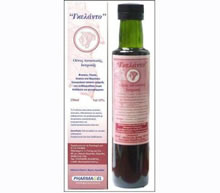
Dictionary of Allergies .. Acarus siro
Acarus siro: A nonpyroglyphid storage mite which may be of clinical importance, particularly in farmers exposed to hay. Acarus siro is the most allergenic species of mite detected in the samples collected from flour mills. The population of A. siro mites peaked in spring and autumn. The immunological disorder caused by repeated exposure to A. siro faeces might be modulated by garlic [1].
Mimolette cheese is inoculated with Acarus siro L. The features studied to identify this mite species included idiosomal length and shape, setae length and arrangement, leg size, placement of anus and genitals, and solenidia shape [2].
Acarus siro L. 1758 (Acari: Acaridida: Acarididae) is an important pest of stored grain because it contaminates the grain by allergens and transfers pathogenous microorganisms. Rapid detection of contamination enables to intercept an early grain infestation by the pest [3].
In recent years, the allergological importance of different mite species not belonging to the family Pyroglyphidae has been demonstrated. These mites, commonly named storage mites, include Lepidoglyphus destructor, Glycyphagus domesticus, Tyrophagus putrescentiae, Acarus siro, Aleuroglyphus ovatus, Suidasia medanensis and Thyreophagus entomophagus. Several allergens from these species have been purified, sequenced and cloned. Many of these allergens have shown sequence homology and a biological function similar to those previously described in Blomia tropicalis and the Dermatophagoides spp. The main allergens described in storage mites include fatty acid binding proteins, tropomysin and paramyosin homologues, apoliphorine like proteins, alfa-tubulines and other, such as group 2, 5 and 7 allergens, which definitive biological function has not been described yet. [4].
The bodies of allergy-causing dust and storage mites likely contain many bioreactive molecules, including some that are allergenic. These molecules may penetrate the epidermis and dermis of the skin.
The effects of mite extracts exerted on both keratinocytes and fibroblasts varied among the house dust mite species, among the storage mite species and between the house dust and storage mites.
Extracts of mites contain substances that modulate the production of proinflammatory cytokines and chemokines secreted by normal human epidermal keratinocytes and dermal fibroblasts, and therefore may influence the course of pathophysiology in the skin in atopic dermatitis [5].
References
1. Abdel-Salam BK. Seasonal population of Acarus siro mites and effects of their faeces on allergenic immunological disorder modulated by garlic in albino rat. Epub 2011 Jul 14.
2. Melnyk JP, Smith A, Scott-Dupree C, Marcone MF, Hill A. Identification of cheese mite species inoculated on Mimolette and Milbenkase cheese through cryogenic scanning electron microscopy. J Dairy Sci. 2010 Aug;93(8):3461-8. doi: 10.3168/jds.2009-2937.
3. Krizkova-Kudlikova I, Stejskal V, Hubert J. Comparison of detection methods for Acarus siro (Acari: Acaridida: Acarididae) contamination in grain. J Econ Entomol. 2007 Dec;100(6):1928-37.
4. Fernández-Caldas E, Iraola V, Carnés J. Molecular and biochemical properties of storage mites (except Blomia species). . Protein Pept Lett. 2007;14(10):954-9.
5. Arlian LG, Morgan MS, Peterson KT. House dust and storage mite extracts influence skin keratinocyte and fibroblast function. Int Arch Allergy Immunol. 2008;145(1):33-42. Epub 2007 Aug 17.

Γκέλης Ν.Δ. - Λεξικό Αλλεργίας - Εκδόσεις ΒΕΛΛΕΡOΦΟΝΤΗΣ - Κόρινθος 2013
Gelis Ν.D. - Dictionary of Allergies - VELLEROFONTIS Publications - Corinth 2013




